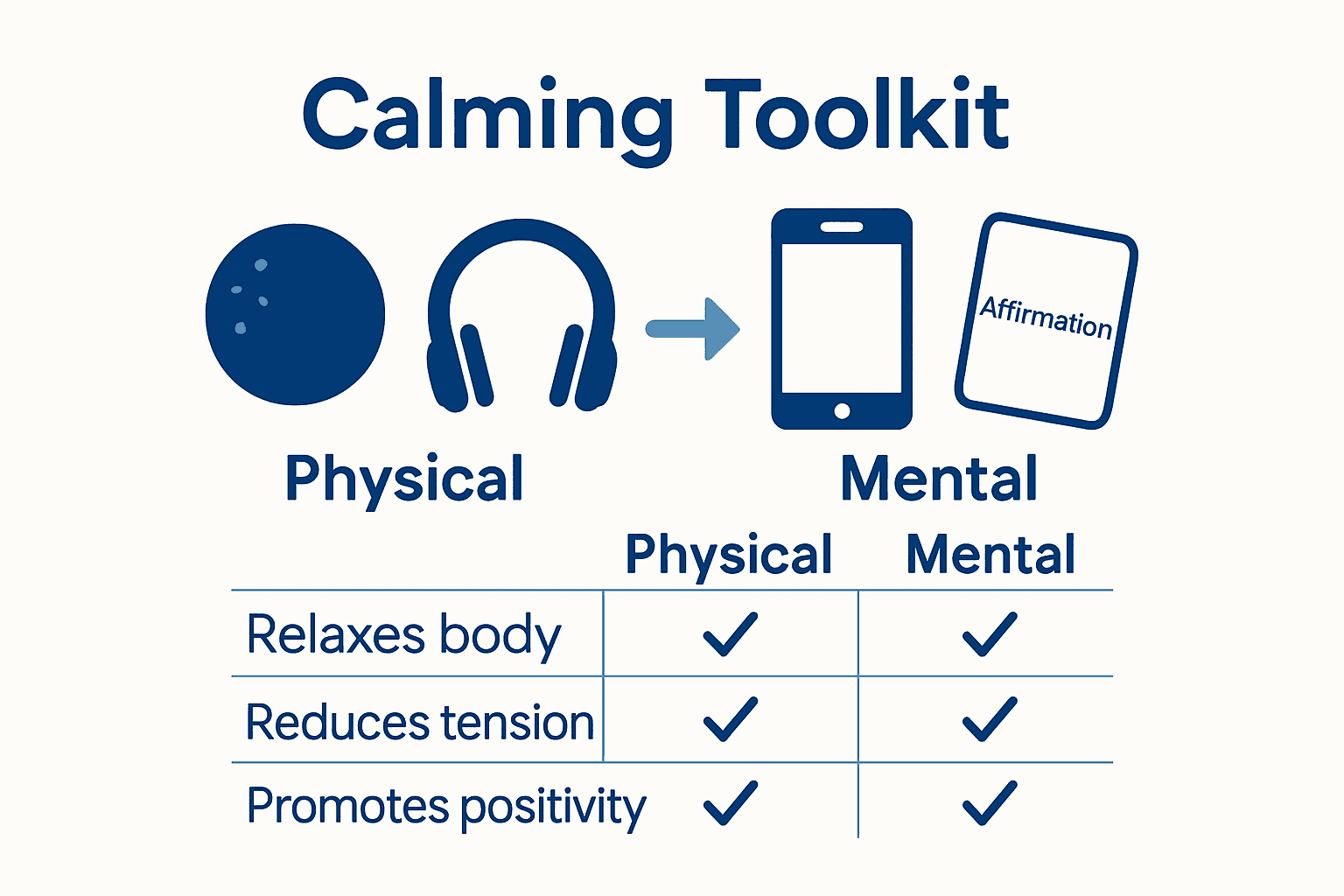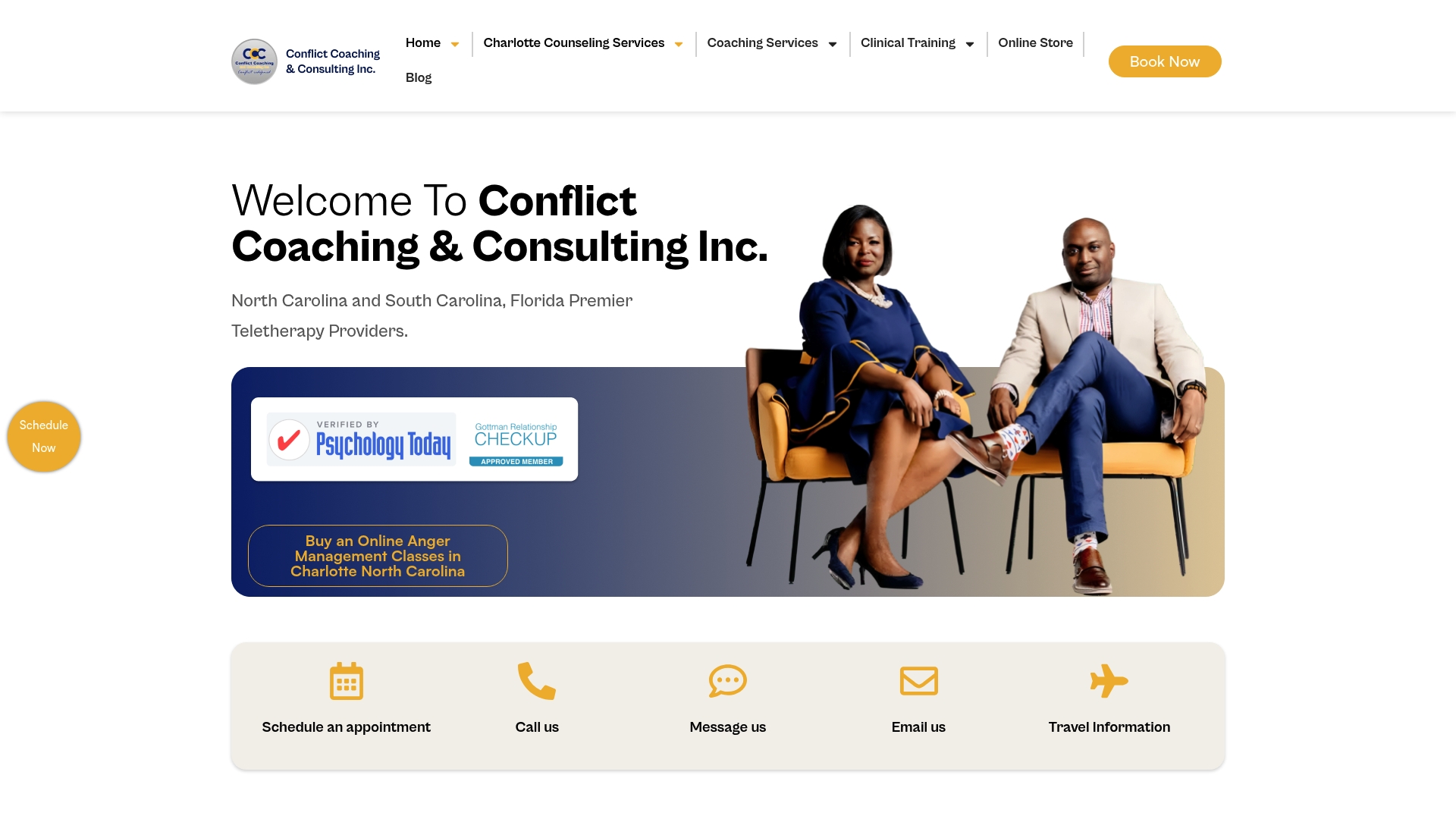How to Stay Calm Naturally: Proven Relaxation Steps
Stress affects everyone, but only a fraction of people know how to spot the early signs before things spiral. Everyday triggers—missed deadlines, heated arguments, or even rushing out the door—can quickly pile up without warning. Learning effective ways to manage stress is vital because chronic stress impacts your health, focus, and relationships. Discover clear and practical steps for recognizing stress triggers, calming your mind, and building true emotional resilience.
Table of Contents
- Step 1: Assess Your Triggers And Warning Signs
- Step 2: Prepare A Personal Calming Toolkit
- Step 3: Practice Mindful Breathing Techniques
- Step 4: Redirect Negative Thoughts Constructively
- Step 5: Review Emotional Responses For Future Calm
Quick Summary
| Key Point | Explanation |
|---|---|
| 1. Recognize your triggers | Identify emotional triggers and stress signs to manage responses effectively. This awareness allows for proactive coping strategies. |
| 2. Create a calming toolkit | Assemble portable resources like stress balls and breathing apps for quick access during stressful moments, enhancing emotional regulation. |
| 3. Practice mindful breathing | Utilize the 4-7-8 breathing technique regularly to shift from anxiety to calmness, improving overall stress management. |
| 4. Redirect negative thoughts | Learn to challenge and reframe negative thoughts to foster resilience and maintain mental balance. |
| 5. Review emotional responses | Keep a daily log of your emotional reactions to identify patterns, improving awareness and future stress management strategies. |
Step 1: Assess Your Triggers and Warning Signs
Learning to recognize your emotional triggers and stress warning signs is the first critical step toward staying calm naturally. By understanding what sets you off and how stress manifests in your body and mind, you can develop targeted strategies to manage your emotional responses before they escalate.
According to Berkeley University Health Services, stress indicators can appear across multiple domains. Pay attention to psychological signs like unusual emotional responses or excessive tearfulness. Notice academic or professional performance changes such as sudden declines in work quality or repeated absences. Physical signs might include noticeable fatigue, changes in appearance, or disrupted sleep patterns.
The American Institute of Stress suggests tracking seven key warning signs of stress. Start by creating a personal journal where you document your emotional and physical reactions. Note patterns like increased irritability, muscle tension, changes in appetite, or difficulty concentrating. Some people experience unprovoked anger or heightened physical tension as stress indicators.
A practical tip is to create a trigger tracking sheet. Divide it into columns tracking the trigger, your emotional response, physical sensations, and initial reaction. This helps you objectively analyze your stress patterns and develop more intentional coping mechanisms.
As you become more aware of your triggers, you will naturally start developing better self regulation skills. The next step involves learning specific relaxation techniques to interrupt stress responses before they take control.
Step 2: Prepare a Personal Calming Toolkit
Creating a personalized calming toolkit gives you a proactive strategy for managing stress and maintaining emotional balance. Having immediate access to specific resources can help interrupt spiraling negative emotions and provide tangible support during challenging moments.
Stanford University recommends building a toolkit that includes multiple sensory and emotional regulation tools. Consider including items like stress balls for physical tension release, calming music playlists, small journals for emotional processing, and printed positive affirmations.
 Digital tools can also be valuable such as meditation apps or breathing exercise guides you can quickly access on your smartphone.
Digital tools can also be valuable such as meditation apps or breathing exercise guides you can quickly access on your smartphone.
The Anna Freud National Centre suggests expanding your toolkit to include both physical and mental resources. This might mean creating a dedicated folder with relaxation techniques, keeping a playlist of soothing music, storing comfort objects like a soft blanket or weighted item, and maintaining a collection of mindfulness exercises you can practice quickly.
A practical tip is to make your toolkit portable and accessible. Consider creating a physical emergency kit you can keep in your bag or workspace and a digital version on your phone. This ensures you always have stress management resources within reach when you need them most.

With your personal calming toolkit ready, you will feel more prepared and confident in your ability to navigate stressful situations effectively. The next step involves learning specific techniques to activate your toolkit and interrupt stress responses.
Step 3: Practice Mindful Breathing Techniques
Mindful breathing is a powerful tool for interrupting stress responses and restoring emotional balance. By learning specific breathing techniques, you can quickly shift from a state of anxiety to calm and regain control over your physiological reactions.
According to SAMHSA, practicing mindful breathing is an essential method for managing stress effectively. Start with the 4-7-8 breathing technique. Inhale quietly through your nose for 4 seconds, hold your breath for 7 seconds, then exhale completely through your mouth for 8 seconds. This pattern helps activate your parasympathetic nervous system and reduces the physiological impact of stress.
MIT Health recommends integrating breathing exercises into your daily routine. Practice these techniques not just during stressful moments, but also as a preventative measure. Create a habit of doing 5-minute breathing sessions in the morning or before challenging activities. This helps train your body to respond more effectively to stress triggers.
A practical tip is to use visual or audio guides when first learning these techniques. Many smartphone apps offer guided breathing exercises that can help you maintain proper rhythm and focus. Consider setting reminders throughout the day to practice your breathing technique.
As you become more comfortable with mindful breathing, you will develop a reliable tool for managing emotional responses. The next step involves exploring additional relaxation techniques to complement your breathing practice.
Step 4: Redirect Negative Thoughts Constructively
Redirecting negative thoughts is a critical skill for maintaining emotional balance and reducing stress. By learning to recognize and transform unproductive thought patterns, you can prevent spiraling anxiety and develop a more resilient mental approach.
Research from DASentimental reveals that emotional recall plays a significant role in managing mental health. Start by identifying your recurring negative thought patterns. When a negative thought emerges, pause and ask yourself three key questions: Is this thought factual? Is it helpful? What alternative perspective could I consider?
The Human Stress Assessment study highlights cognitive restructuring as an essential stress management technique. Develop a practice of thought replacement. For each negative thought, consciously craft a more balanced or constructive alternative. For instance, transform “I always fail” to “I am learning and improving with each experience.”
A practical tip is to keep a thought journal. Write down negative thoughts as they occur, then immediately reframe them in a more supportive way. This creates a tangible record of your mental shifts and helps reinforce positive cognitive patterns.
As you become more skilled at redirecting negative thoughts, you will build greater emotional resilience. The next step involves integrating these mental strategies with physical relaxation techniques for comprehensive stress management.
Step 5: Review Emotional Responses for Future Calm
Reviewing your emotional responses is a powerful method for developing long-term emotional resilience and understanding your stress patterns. By reflecting on how you react in different situations, you can create more effective strategies for maintaining calm and managing future challenges.
Research from the Electrodermal Insights study suggests that understanding stress dynamics requires a systematic approach to emotional assessment. Start by creating a daily emotional log where you record stressful situations, your immediate reactions, and how you ultimately managed those feelings. Note the triggers, your physiological responses, and the strategies that helped you regain composure.
The Stress Assessment research emphasizes the importance of tracking physiological signals during emotional experiences. Consider using a journal or digital app to document your stress levels, including physical sensations like increased heart rate, muscle tension, or changes in breathing. Look for patterns that reveal your unique stress response and identify the most effective techniques that help you return to a calm state.
A practical tip is to review your emotional log weekly. Look for recurring themes, identify your most common stress triggers, and develop proactive strategies to address them before they escalate. This reflective practice helps you build emotional intelligence and creates a personalized roadmap for managing future stress.
As you become more skilled at reviewing and understanding your emotional responses, you will develop a more nuanced approach to maintaining calm. The final step involves integrating all these techniques into a comprehensive stress management strategy.
Take Control of Your Calm and Embrace Lasting Emotional Balance
Struggling to stay calm and manage natural stress triggers effectively can leave you feeling overwhelmed and exhausted. This article highlights key steps like mindful breathing, recognizing emotional signals, and redirecting negative thoughts to help you regain control. If these challenges resonate with you, it is essential to build a personalized support system that goes beyond self-help techniques.

Discover tailored mental health and conflict resolution solutions at Mastering Conflict crafted by Dr. Carlos Todd and his expert team. Whether you need expert anger management classes, individual therapy, or guidance through couples and family counseling, we provide clinically supported strategies to complement your natural relaxation practices. Begin your journey today. Visit Mastering Conflict to book your appointment and unlock the tools for sustained calm and emotional resilience.
Frequently Asked Questions
How can I identify my emotional triggers for stress?
Recognize your emotional triggers by creating a personal journal to note your reactions. Track incidents of anxiety and physical symptoms consistently to spot patterns and understand what causes your stress.
What items should I include in my personal calming toolkit?
Your personal calming toolkit can include stress balls, calming music playlists, journals for emotional processing, and printed affirmations. Make sure to have both physical items and digital resources for quick access during stressful moments.
What breathing techniques can help me stay calm?
Try the 4-7-8 breathing technique: inhale through your nose for 4 seconds, hold for 7 seconds, and exhale through your mouth for 8 seconds. Practice this technique daily for at least 5 minutes to improve your body’s response to stress triggers.
How can I effectively redirect negative thoughts?
Identify negative thoughts and challenge them by asking if they are factual and helpful. Reframe negatives into constructive alternatives; for example, change “I always fail” to “I am learning with each experience.”
What should I include in my emotional log for stress management?
Your emotional log should document stressful situations, your immediate feelings, and the coping strategies used. Review this log weekly to identify recurring patterns and improve your emotional responses over time.
How can I proactively manage my stress in daily life?
Incorporate brief mindfulness sessions, like 5-minute breathing exercises, into your daily routine. Doing this regularly can build your resilience against future stress and help you maintain emotional balance.

